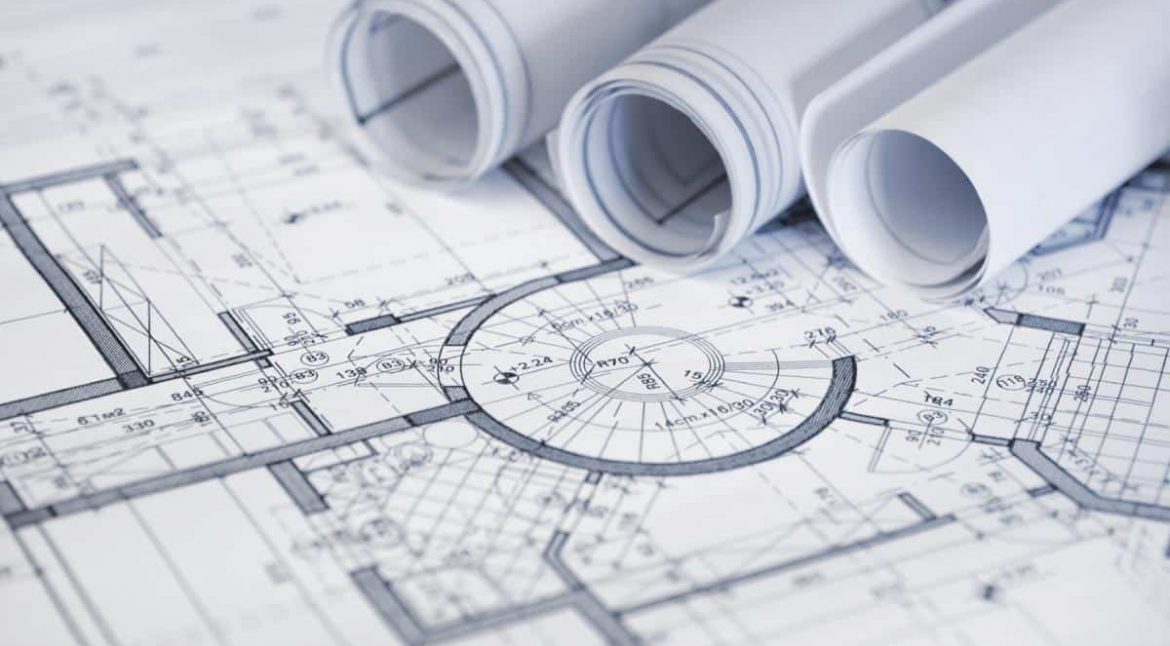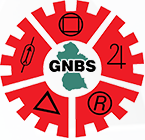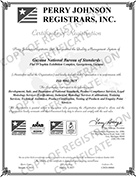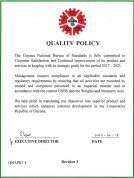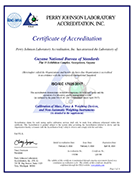Recently, a number of fires have engulfed both commercial and residential buildings across the country, costing millions of dollars in damages and losses. These occurrences have raised many questions including whether buildings in Guyana are being constructed according to the country’s building code.
In this week’s edition of ‘GNBS in Focus,’ we will look at Part 3 of the Code of Practice for Buildings, which addresses Fire Safety, Use and Occupancy. This section of the Code sets minimum requirements regarding the safety of buildings relating to aspects of fire protection and structural sufficiency.
One of the most important requirements of this section is for buildings to be constructed using design materials and methods that are fire resistant while under load to avoid rapid collapse or disintegration during or immediately after a fire.
Further, built-in equipment and warning systems must be in installed to alert occupants of a potential or current fire. While the document does not specify what those equipment and warning systems are, these can be in the form of smoke detectors, sprinklers or alarm systems that alert the Guyana Fire Service (GFS) when a fire starts.
According to the Building Code, in the event of a fire, adequate fire-suppression equipment shall be available to restrict the fire to the room in which it originated. Such a system will minimise damage to the building and its contents and prevent the fire from spreading to other rooms or buildings.
In addition, many times, firefighters are hindered by the amount of smoke emanating from buildings that are on fire. As such, adequate smoke control systems are recommended by this section of the Code to minimise the spread of smoke to escape paths, compartments and other buildings to enable access. Such control systems also aid in protecting occupants of the building and enable them to leave the structure and its precincts in safety.
It must be noted too that to ensure safety, constructed exit ways should guarantee adequate means of escape in the case of a fire or other emergencies from all parts of the building to a place of safety. Stairways, ramps, floors and balconies, or any roof to which people have access, shall also have adequate protection to minimise the risk of falling.
Moreover, the Guyana Fire Service has found many fires to be electrical in origin. This section of the building code stipulates that fire generating and heat producing appliances, mechanical and electrical equipment and systems shall be installed in a manner which prevents the ignition of materials used in the area where they are housed/ located. The Guyana National Bureau of Standards (GNBS) also urges that only quality electrical equipment and fittings be purchased and used in building construction. These must be installed by certified electricians.
In smaller buildings, which include residences, the Code advised that drapes, curtains, cushion coverings and other items made of synthetic materials not be placed in kitchen areas. Further, exterior doors shall open outwards including the kitchen door, to allow easier escape, while interior doors shall open inwards. Meanwhile, ceilings shall not be made of flammable materials and stairways shall be one meter wide for persons to be carried down to safety.
The Fire Safety, Use and Occupancy section of the Building Code also covers many other crucial aspects including Fire safety during construction and demolition, access for disabled persons, and special use and occupancy requirements.
Engineers and building contractors should seek to acquire copies of this and other relevant Sections of the Building Code, to guide their professional practices. These documents are available at the GNBS and sold at affordable costs.
For further information, contact the GNBS on telephone numbers: 219-0064/65/66. Follow us on Facebook and Instagram, @gnbsgy and @gnbs_gy, respectively.

